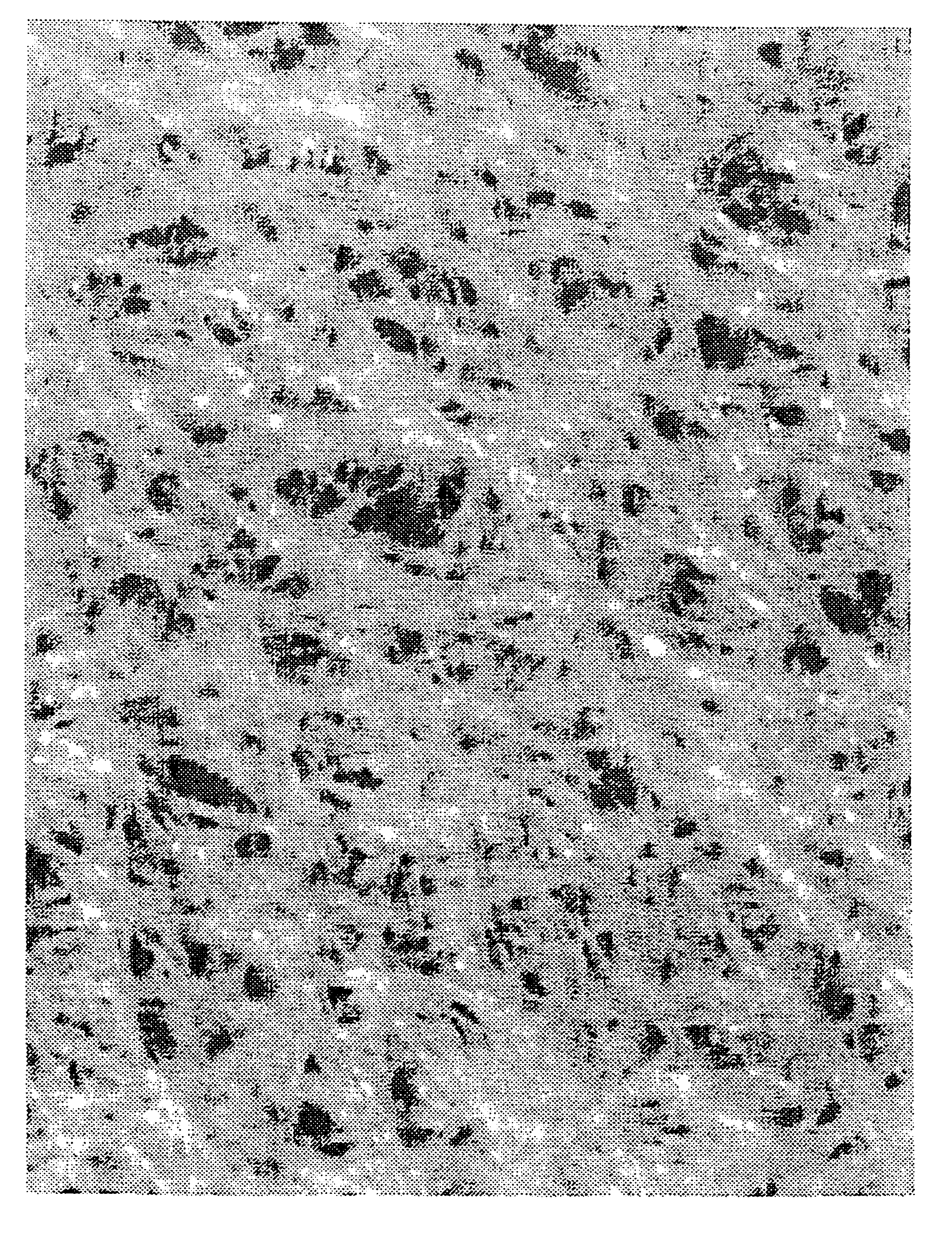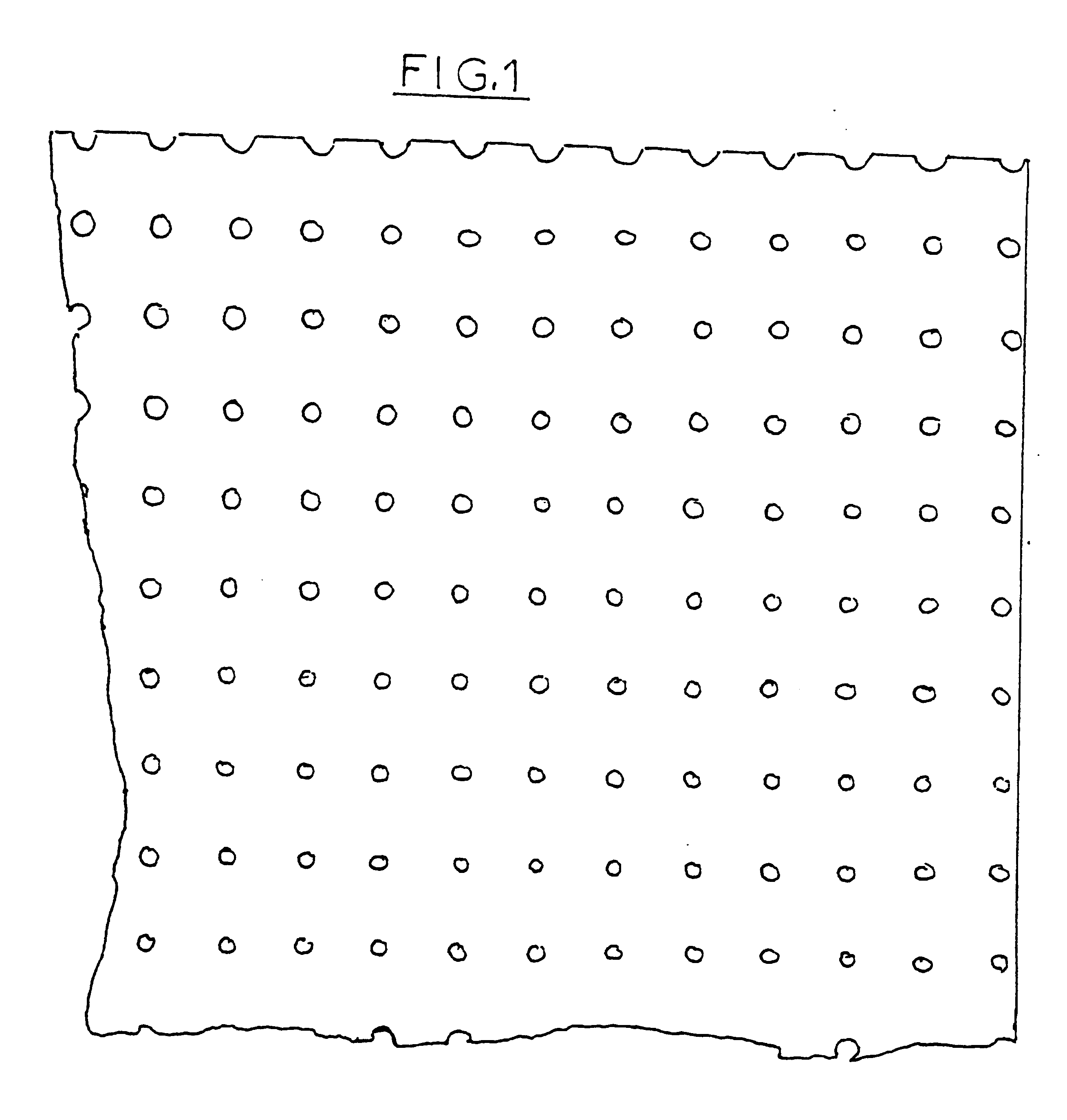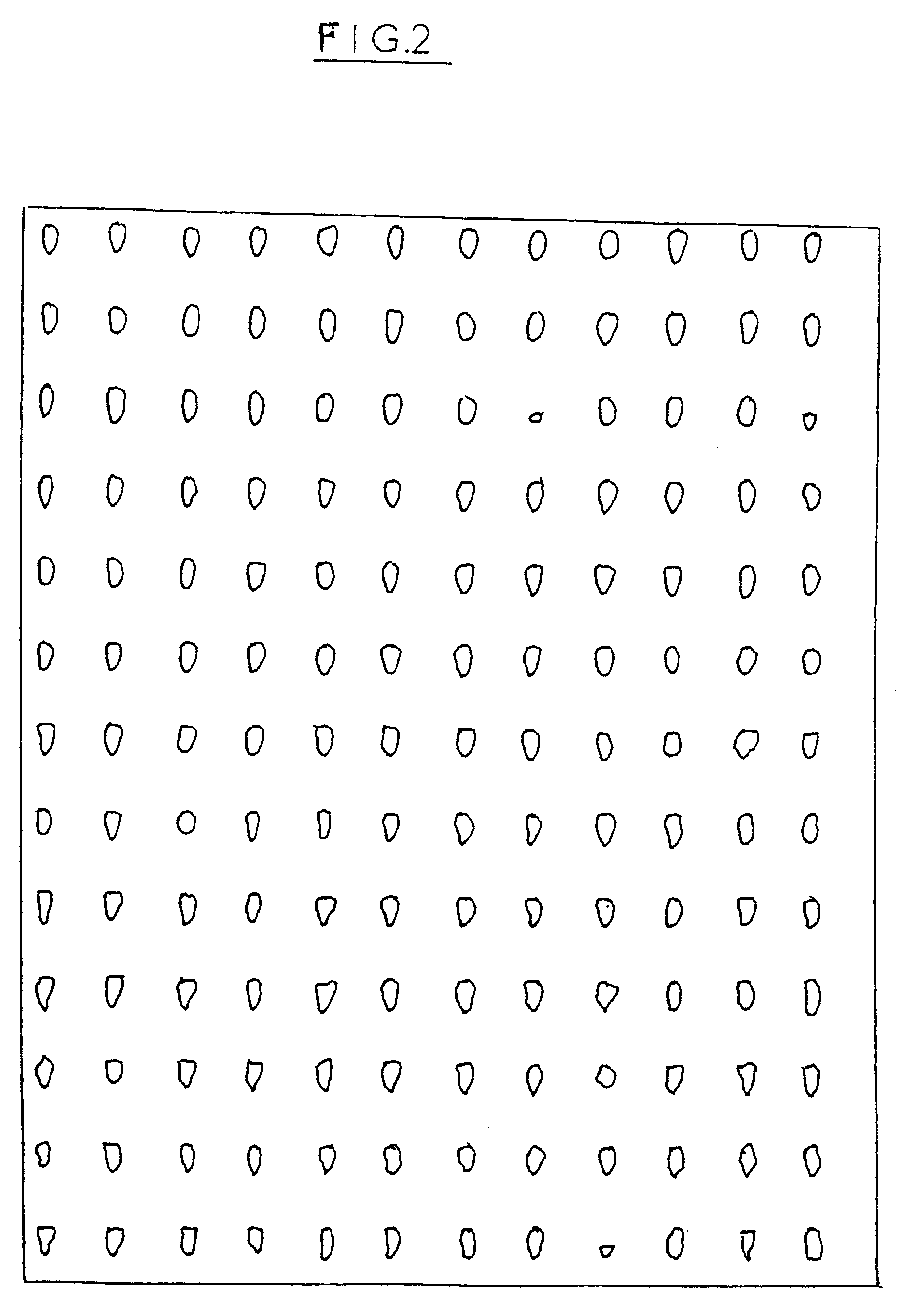Use of an air permeable paper sheet as support element for a stack of fabrics
a technology of air permeable paper and fabric, which is applied in the direction of conveyors, layered products, lamination, etc., can solve the problems of scrap production, deformation of cut panels, and hardly improved mechanical properties
- Summary
- Abstract
- Description
- Claims
- Application Information
AI Technical Summary
Benefits of technology
Problems solved by technology
Method used
Image
Examples
example 1
A paper that can be used according to the invention as a support element for a stack of fabrics on a manufacturing line, is produced from a conventional paper composition consisting of 77% unbleached southern-pine kraft pulp and 8% unbleached fluff pulp.
In the circuit, sufficient water is added in order to obtain a final dilution of less than 1 g / liter, namely, in the present case, 0.3 g / liter, allowing the fibres to be uniformly dispersed.
Binders consisting of 5% pregelatinized cationic starch and 10% vinyl acetate latex are incorporated, these binders being incorporated by any conventional technique such as a padding, spraying or imprinting or "size press" technique and, in the present case, a "size press" technique.
After drying and crosslinking, the end product is wound up with the desired width by the user and has a structure as illustrated in FIG. 4.
The table below gives the characteristics of such a product compared with three conventional perforated papers as illustrated in F...
example 2
A paper sheet that can be used according to the invention as support for a stack of fabrics is produced by carrying out, before adding the binder as in Example 1, a textiling treatment by passing it over a conventional machine for conventional fluid jet or knife treatment, of the type of those sold by the company ICBT Perfojet.
In order to produce such a paper, a paper pulp comprising, as in Example 1:
77% unbleached southern-pine kraft pulp; and
8% unbleached fluff pulp is used.
The entire pulp is defibred / refined to only 15 degrees Schopper-Riegler with approximately 30 g / liter of water.
As in Example 1, sufficient water is provided in the circuit in order to achieve a final dilution of less than 1 g / liter, and in the present case 0.3 g / liter, thereby ensuring that the fibres are uniformly dispersed.
The still-wet fibrous web thus formed receives a microperforation treatment by a fluid jet or knife on a conventional Perfojet-type machine, with a perforated cylinder or through a mesh wit...
example 3
Example 2 is repeated, except that reinforcing fibres are incorporated into the paper pulp.
The aqueous composition contains 72% unbleached southern-pine kraft pulp and 9% unbleached fluff pulp.
All of the pulp is defibred / refined to only 18 degrees Schopper-Riegler and incorporated into it are 5% of 1.7 decitex polyester fibres chopped to 18 mm.
The mixing into water is done so as to have 15 to 20 g / liter approximately.
A wet-strength agent, consisting of 0.7% of a polyamide epichlorohydrin resin, is added in the circuit for feeding the forming fabric.
The supply of water to the circuit is carried out in such a way that a final dilution of less than one gram / liter is obtained, making it possible to ensure that the fibres are uniformly dispersed, which dilution in this example is 0.3 g / liter.
The wet fibrous web thus formed is textiled in a manner similar to Example 2, the fluid pressure being 11 bar and the water knife having been replaced by fluid jets, with approximately 100 jets / needl...
PUM
| Property | Measurement | Unit |
|---|---|---|
| diameter | aaaaa | aaaaa |
| total area | aaaaa | aaaaa |
| concentration | aaaaa | aaaaa |
Abstract
Description
Claims
Application Information
 Login to View More
Login to View More - R&D
- Intellectual Property
- Life Sciences
- Materials
- Tech Scout
- Unparalleled Data Quality
- Higher Quality Content
- 60% Fewer Hallucinations
Browse by: Latest US Patents, China's latest patents, Technical Efficacy Thesaurus, Application Domain, Technology Topic, Popular Technical Reports.
© 2025 PatSnap. All rights reserved.Legal|Privacy policy|Modern Slavery Act Transparency Statement|Sitemap|About US| Contact US: help@patsnap.com



